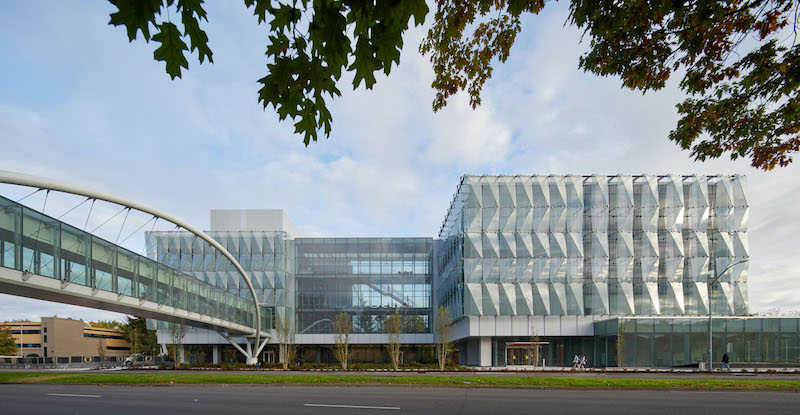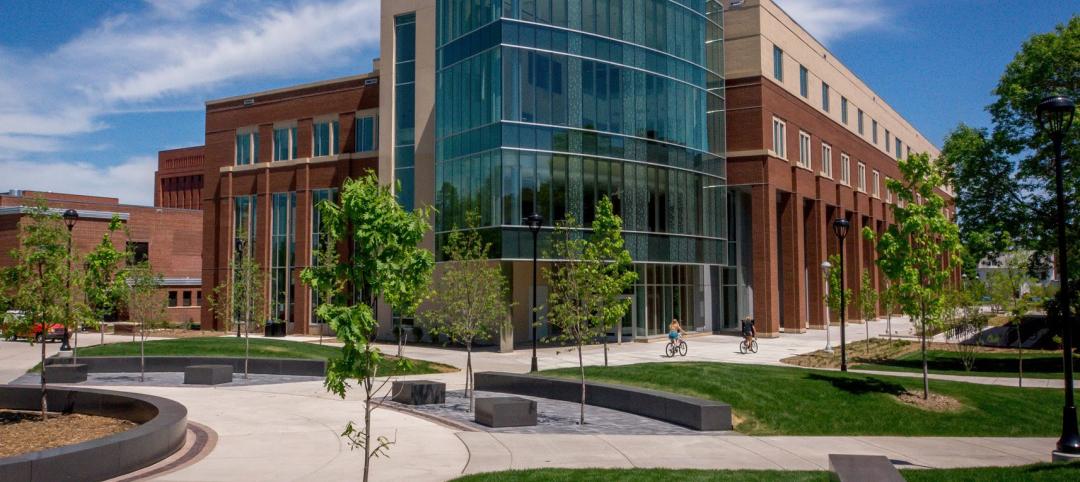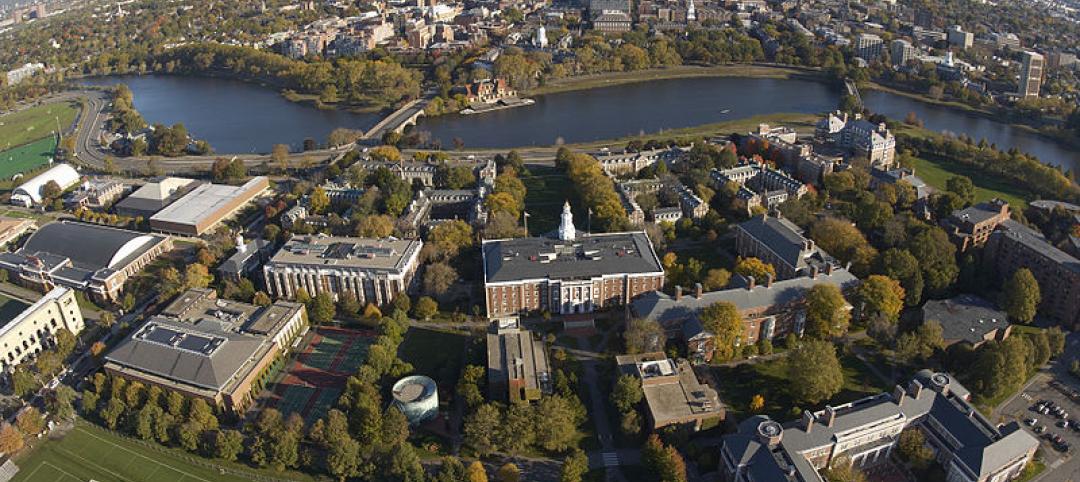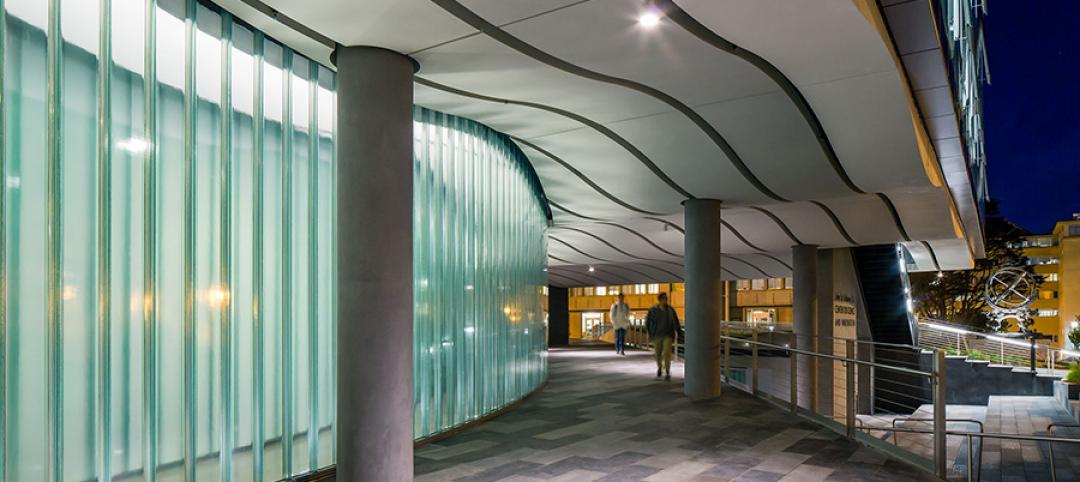Earlier this month, the University of Oregon in Eugene opened the Phil and Penny Knight Campus for Accelerating Scientific Impact. The 160,000-sf complex, which consists of two facing L-shaped towers, supports a mission to shorten the timeline between discovery, development, and deployment by bringing together engineering, applied science, business innovations, and culture. Its environment priorities revolve around wellness, human performance, and community. (The Campus’s tagline is “Science Advancing Society.“)
Phil Knight, co-founder and chairman emeritus of Nike, donated $500 million for this project. “Phil was most interested in the mission” of acceleration, Todd Schliemann, FAIA, Design Partner at Ennead Architects, tells BD+C. The Campus’s current focus is bioengineering, and OU partners with Oregon State University to offer a PhD program in that discipline.
Ennead Architects was this project’s design architect, Portland, Ore.-based Bora Architecture & Interiors was its AOR and designed some of the interiors, and Hoffman Construction built the campus.
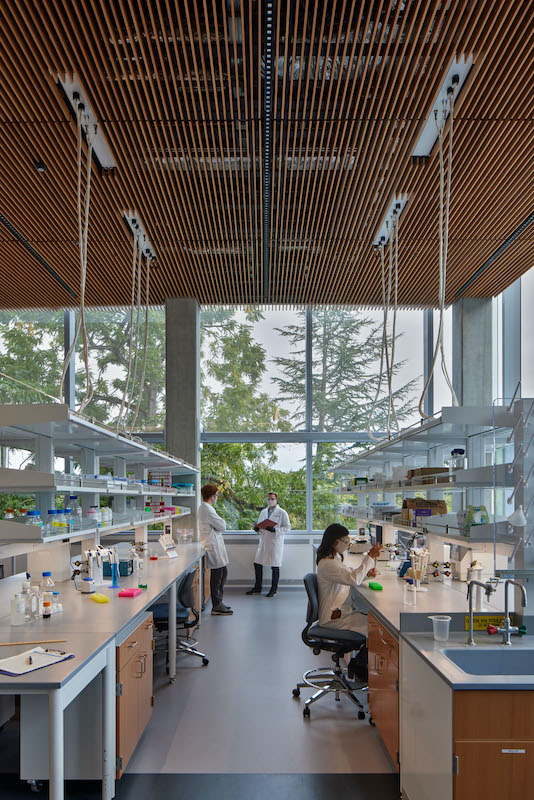
Lab space (above) and work space (below) intersect in the campus's buildings. Mass timber was applied throughout the Campus, including the labs' ceiling.
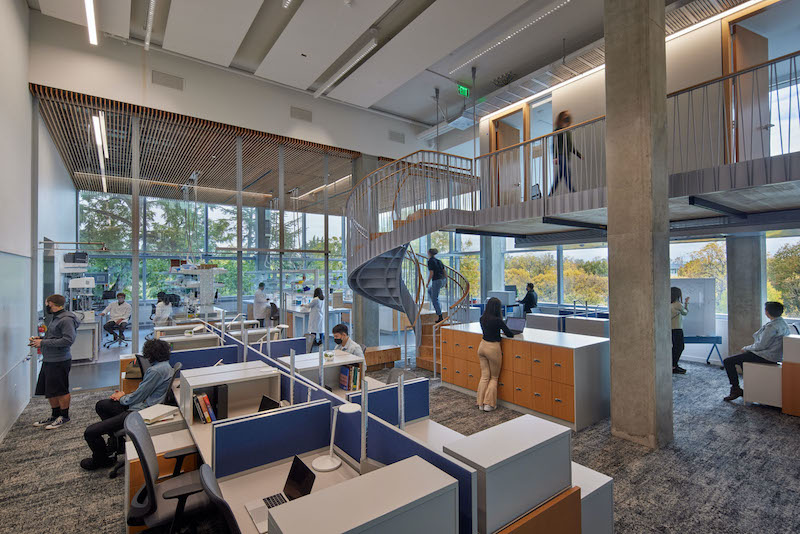
Built on land where a Domino’s Pizza, a mini-mall and parking lot once stood, the Knight Campus is situated between the University of Oregon’s main campus and parkland straddling the Willamette River. A 190-ft-long, 48-ft-wide enclosed bridge, stretching 35 ft above street traffic, connects Knight Campus to Oregon’s existing campus.
Schliemann says the university is positioning the Knight Campus—which he calls a “humanistic research machine”— as a “gateway building” to a possible future research complex.
During the design process, the university hadn’t decided what disciplines these towers would house. So before designing the Knight Campus, representatives from the design team visited several other universities, including MIT’s Media Lab, Harvard, Stanford, and University of California at San Francisco. What they all have in common, says Schliemann, are collaborative spaces where knowledge can be shared. Stanford’s engineering complex, he adds, is noteworthy for how much natural light it lets inside.
‘NEIGHBORHOODS’ BRING RESEARCHERS TOGETHER
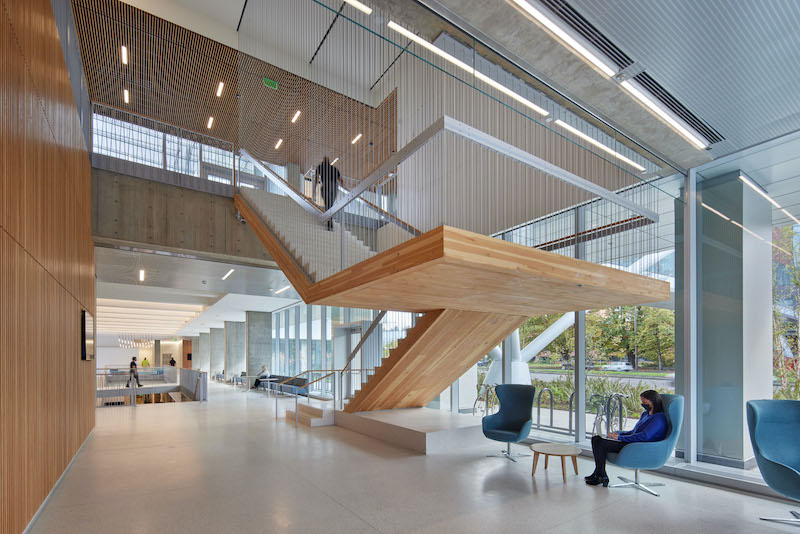
Staircases made from cross-laminated timber connect the floors.
The Knight Campus has several distinguishing characteristics:
•Its two upper floors include four research “neighborhoods” that each has a wet bench area, computational space, and offices where Principal Investigators work. Schliemann contends that this is one of the first lab buildings in the U.S. where PIs are this visible to other research teammates.
•The Campus’s double-skinned façade showcases an outer wall consisting of 650 glass panels and designed to resemble water flowing over rocks. This cascading wall is stabilized by an inner curtainwall made up of 900 glass panels. Schliemann says that this design and materials were chosen to let more natural light and panoramic exterior views into the building (which, he contends, improves working conditions), and for passive energy performance (the inner wall of the façade never gets exceedingly warm).
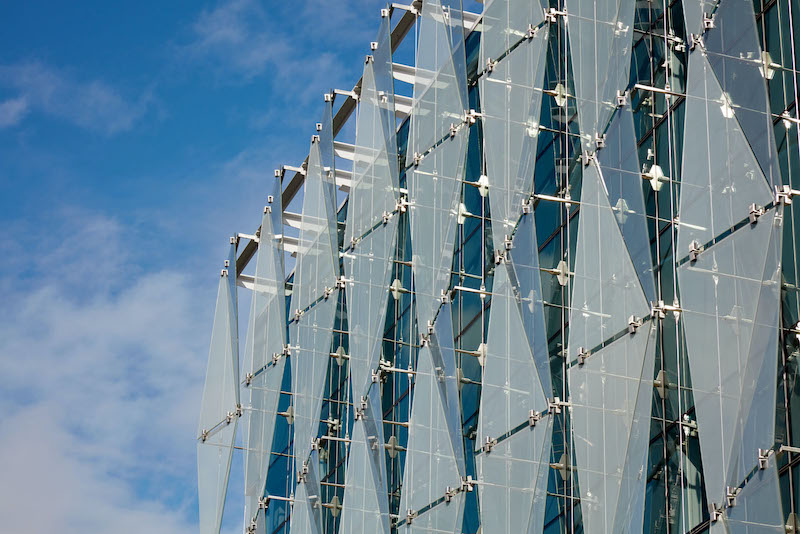
The Campus's double-skinned facade lets more natural light into the buildings and keeps heat from penetrating the inner curtainwall.
The wall structure was light enough to be hung from the roof component.
•Mass timber is prevalent throughout the Knight Campus, whose construction used 20,500 sf of cross-laminated timber that includes 180 CLT panels and 4,000 lbs of wood for each of the building’s staircases. The 21-foot floor-to-floor height allows for suspended mezzanine structures of mass timber containing offices for faculty, creating a new level of connectivity to their labs and graduate students.
Mass timber “is one of the most sustainable ways to construct a building” says Schliemann. (The Knight Campus is targeting LEED Gold certification.) Using mass timber also supports Oregon’s local economy. While vibration prevents a lab space from being made entirely with mass timber, “we could use it for offices, stairs, ceilings and bridges. Plus, we didn’t have to sheetrock the ceilings, as fire codes have finally caught up with mass timber” as a fireproofing agent.
Also see: Researchers use U. of Arkansas buildings as testbed for CLT panels.
SPACES FOR FORMAL OR RELAXED INNOVATION AND INTERACTION
Among the Knight Campus’s amenities are a 6,000-sf Innovation Center and 1,000-sf Wellness Center. While the Innovation Center might seem small when compared to other university research facilities, Schliemann counters that its scale is deceptive. “It gets innovators out into the real world.” He adds that all Knight Campus labs are leasable and tenant-adaptable.
The Wellness Center started out as a locker room with showers. Then spaces for yoga and other exercise regimens were included. Schliemann says the campus has a program where students can take bike rides with researchers.
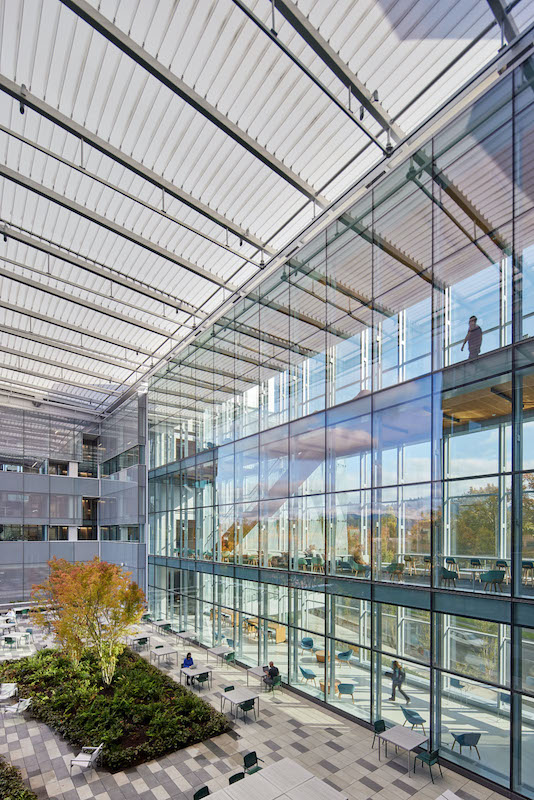
An elevated terrace and courtyard between the Campus's two buildings is covered with a canopy made from ETFE.
Between the Campus’s two buildings is an elevated terrace and courtyard, protected by a transparent plastic canopy, where students and faculty can relax, socialize, and connect with nature, as the terrace overlooks landscaping and the tree-covered Coburg Hills.
Related Stories
| Jul 18, 2014
2014 Giants 300 Report
Building Design+Construction magazine's annual ranking the nation's largest architecture, engineering, and construction firms in the U.S.
| Jul 11, 2014
$44.5 million Centennial Hall opens at University of Wisconsin-Eau Claire
Centennial Hall houses the College of Education and Human Sciences and consolidates teacher education. It is the first new academic building on the UW-Eau Claire campus in more than 30 years.
| Jul 10, 2014
Berkeley Lab opens 'world's most comprehensive building efficiency simulator'
DOE’s new FLEXLAB is a first-of-its-kind simulator that lets users test energy-efficient building systems individually or as an integrated system, under real-world conditions.
| Jul 9, 2014
Harvard Business School to build large-scale conference center
Expected to open in 2018, the facility will combine the elements of a large-scale conference center, a performance space, and an intimate community forum. The new building will be designed by Boston-based William Rawn and Associates.
| Jul 7, 2014
7 emerging design trends in brick buildings
From wild architectural shapes to unique color blends and pattern arrangements, these projects demonstrate the design possibilities of brick.
Sponsored | | Jul 7, 2014
Channel glass illuminates science at the University of San Francisco
The University of San Francisco’s new John Lo Schiavo Center for Science and Innovation brings science to the forefront of academic life. Its glossy, three-story exterior invites students into the facility, and then flows sleekly down into the hillside where below-grade laboratories and classrooms make efficient use of space on the landlocked campus.
| Jul 2, 2014
Emerging trends in commercial flooring
Rectangular tiles, digital graphic applications, the resurgence of terrazzo, and product transparency headline today’s commercial flooring trends.
| Jun 30, 2014
Research finds continued growth of design-build throughout United States
New research findings indicate that for the first time more than half of projects above $10 million are being completed through design-build project delivery.
| Jun 18, 2014
Arup uses 3D printing to fabricate one-of-a-kind structural steel components
The firm's research shows that 3D printing has the potential to reduce costs, cut waste, and slash the carbon footprint of the construction sector.
| Jun 16, 2014
6 U.S. cities at the forefront of innovation districts
A new Brookings Institution study records the emergence of “competitive places that are also cool spaces.”


